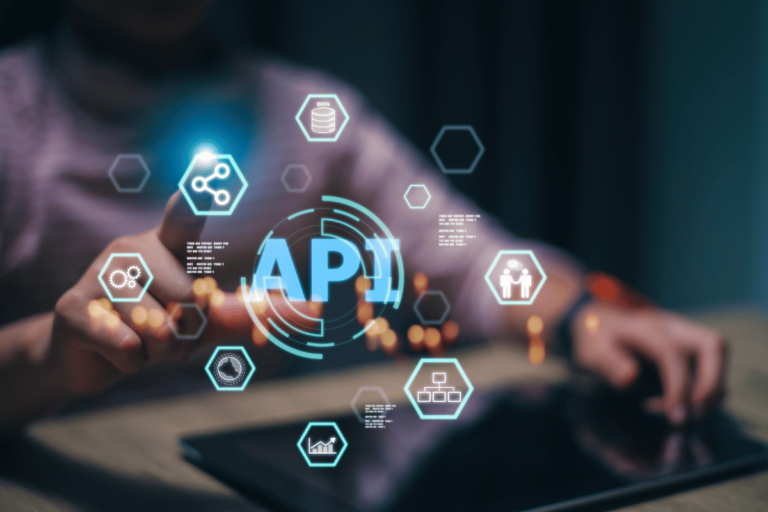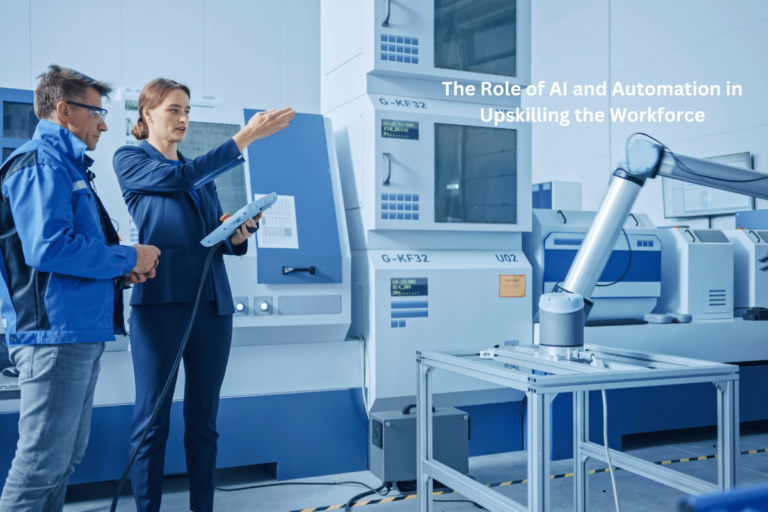The Impact of AI on Product Development and Innovation
Artificial Intelligence (AI) has changed many industries, making business operations and innovation new and exciting. From better decision-making by product managers to the faster introduction of products, AI brings many advantages. Let’s dive into how AI shakes up and improves product development and innovation.
Key Takeaways:
- AI empowers product managers to make smarter decisions and optimize resources in the product development process.
- It revolutionizes data analysis, experimentation, and communication within product management.
- The integration of AI across the product management life cycle enhances efficiency and accelerates innovation.
- AI plays a vital role in the discovery, validation, and build phases of product development.
- Companies leveraging AI in product development experience benefits such as accelerated innovation and reduced time-to-market.
The Triad of AI-Powered Data Analysis, Experimentation, and Communication
AI is changing product management by improving how data is analyzed, experiments done, and communication used. It helps product managers get key insights, scale up innovation, and communicate better.
AI is essential in examining data to enhance the product management process. It spots patterns in big data, making it easier to find important insights. This helps decision-makers choose paths that boost product success.
AI is also great for testing new ideas quickly, known as AI-driven experimentation. With AI tools, testing and improving concepts happen fast. This makes the innovation process quicker and can lead to creating amazing products.
AI improves how team members in product management talk to each other, too. It simplifies how communication happens, making it easier to share knowledge. This means teams can share ideas, align strategies, and communicate better far more effectively.
AI is revolutionizing product management by changing how data is analyzed, tests are run, and ideas are shared. These advances make developing products more efficient and effective.
The combination of AI-powered data examination, experimentation, and talking is key for success in product managing. By using AI, product managers gain insights, enhance innovation, and communicate well. This all helps make new and market-ready products possible.
| Data Analysis | Experimentation | Communication |
|---|---|---|
| Efficient analysis of vast datasets | Rapid prototyping, testing, and iteration | Streamlined communication workflows |
| Pattern recognition for valuable insights | Accelerated innovation cycle | Effective collaboration within teams |
| Enhanced data analysis efficiency | Scaling of innovation excellence | Elevated communication effectiveness |
The Product Management Life Cycle: A Cyclical Framework
The product management life cycle is a step-by-step plan for product managers. It moves through six main stages. These are: define, discover, validate, build, launch, and value & iterate. Each step is important for creating and improving a product. This process helps product managers make good choices and use resources wisely.
1. Define: This first step is about setting up business goals. It means knowing who you’re selling to and what they need. This groundwork is vital for what comes next.
2. Discover: Next, product managers dive deep into the market. They look at trends, competitors, and try to spot new opportunities. This research helps them find out what customers really want. It guides the product’s path forward.
3. Validate: Checking ideas before you spend too much is smart. In this phase, product managers test their theories. They talk to potential users and gather feedback. This helps avoid costly mistakes and boosts the chance of success.
4. Build: Bringing a product to reality is what this phase is about. Product managers work with teams to create and develop the product. They turn a concept into something real. It takes good management and teamwork to pull it off well.
5. Launch: The launch is when the product meets the market. A strong plan is made to get it out there. This phase is key for attracting first customers. It’s about marketing, sales support, and making sure customers are happy.
6. Value and Iterate: After launching, the work continues with improving and adding value. Product managers watch how the product is doing. They listen to feedback and make it better. This process keeps customers happy and the product competitive.
The product management life cycle brings several advantages:
- It helps in making confident choices by offering a clear plan.
- It makes the design and building of the product better with organized steps.
- It brings teams together by setting shared goals and encouraging teamwork.
- It helps update old ways by focusing on what the customers really want and need.
Using the product management life cycle means guiding a product from start to finish. It ensures the product meets its goals and is a success in the market.
Phase 1 – AI in the Discovery Phase: Unlocking Insights, Empowering Decisions
AI is key in the discovery phase of making new products. It helps find important insights and supports making decisions based on data. This makes understanding and using data quicker and more accurate. So, making decisions becomes smarter.
AI can bring together data from many sources like talking to customers, user feedback, and how products are used. It gives a big picture of what users experience. Using both numbers and stories helps find important trends. They might otherwise be missed.
“AI-driven recommendations are particularly valuable in the discovery phase, helping product managers justify identified user problems and guide decision-making. These recommendations provide actionable insights, narrowing down the focus and prioritizing the most critical areas of improvement.”
Joining numbers with stories helps fully understand what users need. This mix helps make decisions with facts and emotions combined. It supports making smart choices.
One big plus of AI is it helps make quicker decisions based on data. With its smart systems and learning, AI shares ideas fast. This speeds up the process of finding great product solutions.
AI really helps in the discovery part by showing the way, simplifying data, and giving smart hints. It helps teams choose wisely. This makes new products better and helps them succeed.
Phase 2 – AI in the Validation Phase: Revolutionizing Decision-Making
The validation phase is changing a lot, thanks to AI. Before, it was known for taking up a lot of time. But now, AI tools help product managers decide what to make quickly and with confidence. These tools automate testing, create test cases, and analyze results fast, which saves a lot of time and effort.
Bringing AI into the mix means we can look at a wider range of data. We can now include product usage data, surveys, and even support ticket data. Mixing all this information gives us a better overall picture. This makes the validation process work better as it sees everything in a complete way.
AI also plays a big part in making sense of all this data. It gives product managers insights and suggestions. These come from looking deeply at the data. This way, decisions can be made with strong evidence behind them.
Using generative AI for prototypes is a big step in the validation phase. Product managers can create and test many versions at once. This fast process helps try out lots of different designs quickly. It helps find the best and most validated designs.
Using AI in this phase makes everything smoother. It means making decisions easier, looking at more data, and understanding it better, and trying out lots of designs. These changes are making the validation phase work better. It helps in creating products that are more ready for the market.
Benefits of AI in the Validation Phase:
- Automation of testing processes
- Expansion of data sources
- AI-powered data analysis and insights
- Generative AI in prototyping
- Simultaneous testing of multiple iterations
Phase 3 – AI in the Build Phase: Revolutionizing Product Development
AI is key in the build phase, driving innovation across teams. It acts as an “Automator” and helps with collaboration. This boosts creativity and the making of new products.
AI tools help in research and product development. They let product managers analyze data quickly. This leads to better decisions. Brands can also find patterns and prototype ideas faster.
In manufacturing, AI stands out by improving processes. It checks sensor data to avoid breakdowns. This cuts downtime and costs, making operations smoother.
AI changes how we check product quality, making it more accurate. It spots defects early, ensuring top-quality products. This is great for company reputation.
AI also boosts how companies serve customers. It uses data to understand what customers want. This leads to more personal and satisfying experiences.
Last but not least, AI helps products get better over time. It looks at how users interact and gives ideas for changes. This keeps products in step with what customers need.
In short, AI is a big help in making products. It improves teamwork, refines making processes, and makes customers happier. AI is a true partner for innovation and quality.
Leveraging AI Across Product Development: Key Use Cases in Operations
Companies are using AI in product development to better understand consumers and boost growth. Through AI, businesses learn how customers use their products. This helps them create better marketing and add new features based on what customers need.
AI is directly integrated into products, keeping companies ahead with unique and personalized offerings. It allows firms to collect user data, helping to customize their products and services for individual consumer desires.
“Embedding AI into products empowers companies to provide personalized experiences, gain deeper insights into customer needs, and build lasting brand loyalty.” – John Smith, Product Manager at XYZ Corporation
For the best results, companies need focused AI pilot programs aligned with major strategies. These programs help firms test and improve their AI strategies, ensuring they stand out and offer real value.
Investing strategically in AI during the product development cycle can really pay off for those looking to grow and build loyal customers. By using AI, companies confidently navigate changing consumer preferences, moving their business ahead.
Key Use Cases of AI in Product Development Operations
Here are some important ways AI is making a difference:
- Understanding markets and spotting trends through big data analysis
- AI in the design and prototyping stages
- Improvements in production and quality control using AI
- Personalized customer experiences through AI recommendations
- Ongoing product enhancement with AI insights
These AI applications help companies function better, use resources wisely, and offer products and experiences that really connect with consumers.
Real-World Examples
Diverse companies have seen success using AI in product development to grow and win customer loyalty.
“By embedding AI into our products, we have not only enhanced our understanding of customer needs but also created unique experiences that set us apart from our competitors.” – Jane Miller, VP of Product Development at ABC Corporation
For instance, a top e-commerce platform uses AI to review customer interactions and suggest personalized products. This increases customer happiness and repeat business.
And in electronics, AI helps with quality control to catch product issues early, ensuring high-quality items for sale. Better products mean happier customers and stronger loyalty for the brand.
AI is vital in product development. It offers deep consumer insight, product integration, and smart investment opportunities, paving the way for growth, solid brand loyalty, and distinguishing companies in the market.
How to Integrate AI into Your Product Development Process
Integrating AI into the product development process is key. It involves using AI in different stages. This helps companies to better understand what consumers want. It also makes design and production processes more efficient. Lastly, it enables the creation of personalized experiences for customers.
AI for Market Analysis and Trend Identification
AI is crucial for understanding the market and trends. It looks at a lot of data to see what consumers like and what’s becoming popular. This helps product managers make products that people will love.
AI in Design and Prototyping
AI plays a big part in designing and making prototypes. It helps make sure products work well. Product managers can test and change designs quickly with AI. This means they make something that fits customers’ needs better.
AI for Production Optimization and Quality Control
AI improves making products and checking their quality. It can spot problems before they happen. This makes producing things smoother and cheaper. AI-powered systems also check products closely to ensure they are top quality.
AI for Personalized Customer Experiences and Ongoing Improvement
AI makes experiences more personal by learning what customers like. It offers suggestions based on what it knows about a customer. This keeps customers happy and coming back for more. Another benefit is that AI always looks to make the product better by listening to customers’ feedback.
Using AI well in product development can open new doors. It makes companies more efficient. It also helps them come up with products that everyone wants.
| Benefits of Integrating AI into Product Development |
|---|
| Accelerated innovation |
| Reduced time-to-market |
| Enhanced customer experiences |
| Improved product quality |
| Data-driven insights |
| Ongoing product improvement |
Benefits of AI in Product Development
Integrating AI into product development is great for businesses. It can make innovation faster and boost the launch of new products. Using AI gives product managers the power of data-driven insights. Automation makes the development process smoother.
With AI, companies can improve their decisions and understand what consumers want better.
“AI accelerates innovation by providing data-driven insights, automation, and predictive analytics.”
AI can lead to quicker new ideas in making products. Product managers learn a lot from AI about what’s happening in the market and what customers like. This information sparks new ways to create products that customers will want.
Once a product is ready, AI can help get it into the market faster. It speeds up tasks like market research and testing. This means products can be launched sooner, meeting consumer needs faster.
“Companies that leverage AI experience enhanced success in new product launches due to improved decision-making, optimized resources, and better understanding of consumer needs.”
AI also helps launch new products successfully. It predicts what the market will want, sees any upcoming problems, and reduces risks. This way, new products are more likely to be what customers are looking for.
AI in product development also means smarter use of resources. It cuts down on repetitive work, giving product managers more time for important choices. This makes everything from start to finish use resources more wisely.
The advantages of AI in product development are big. It makes innovation faster, gets products to market more quickly, and helps new products do well. With AI, product teams are better at understanding what’s needed and creating products that people will want.
Conclusion
AI is changing how we make products for the better. It helps companies work more efficiently and be more creative. With AI, product managers can use data to make better choices.
It brings new ideas quickly, so companies can keep up with what customers want. AI makes product launches more successful. It helps companies understand their customers well.
The future of making products is with AI. It can keep making things better and better. By using AI, companies can lead in innovation. They can make products that people really need.







